Pre Budget Expectations From Healthcare Industry Experts 2022-23
Pre Budget Expectations From Healthcare Industry Experts 2022-23 From the Desk of Editor AFZAL KAMAL Editor-in-chief Medgate Today Step Up
Pre Budget Expectations From Healthcare Industry Experts 2022-23
From the Desk of Editor
AFZAL KAMAL
Editor-in-chief Medgate Today
Step Up…Own Up
Regular Incidences of health emergencies and crises have historically been a by-product of unplanned, unbridled, myopic and unaccountable industrialisation over past many decades. Looming large over multi-faceted potential NCD health threat in ever mutating pandemic times must be f aced, pre-empted and prevented with utmost preparedness world over. Most of the NCDs are direct fall out of environmental deterioration and degradation caused by such reckless industrialisation that severely impacts a healthy human life in multiple ways especially excessive daily consumption and absorption of hazardous chemicals at home as well as work place. It is high time that industries must collectively as well as specifically step up and own up the accountability and fund or subsidise mandatory budgetary GDP spends on health, world over. However lack of any such voluntary industries’ ownership must neccessiate a policy disruption of fixing accountability that apart from enhancing the budgetary outlay for health could also immensely contribute to SDG 12 “Ensure sustainable consumption and production patterns” also alternatively called responsible consumption and production !
aced, pre-empted and prevented with utmost preparedness world over. Most of the NCDs are direct fall out of environmental deterioration and degradation caused by such reckless industrialisation that severely impacts a healthy human life in multiple ways especially excessive daily consumption and absorption of hazardous chemicals at home as well as work place. It is high time that industries must collectively as well as specifically step up and own up the accountability and fund or subsidise mandatory budgetary GDP spends on health, world over. However lack of any such voluntary industries’ ownership must neccessiate a policy disruption of fixing accountability that apart from enhancing the budgetary outlay for health could also immensely contribute to SDG 12 “Ensure sustainable consumption and production patterns” also alternatively called responsible consumption and production !
…………………………………………………………………………………………………………………………………………………………………………………………………………………………………………….
Rajiv Nath
M D of Hindustan Syringes & Medical Devices
& Forum Coordinator (AiMeD)
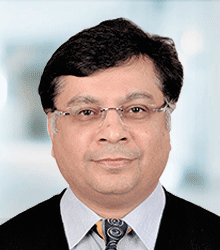 Medical Device Industry Proposal from AiMeD for the Union Budget 2022-23 to curb 46000 Crore > 80% Import Dependence Imports from China of price sensitive Medical Devices went up steeply by 75% from 5208 Cr. Rs. in 2019-20 to 9112 Cr. Rs. in 2020-21. This is an opportunity cost for Indian Manufacturers who could have grown in this period and created global competitiveness but saw with dismay dumping of Chinese import when duties were slashed to zero % at behest of Importer dominant FICCI & CII lobbies for Covid critical items instead of protecting Indian Entrepreneurs with safeguard duties to protect investors who stepped forward to help the country. We suggest : Increase of Custom Duty : As done for Mobile Phones Government should protect the manufacturing base in India by increasing Basic Custom Duty on import of Medical Devices to at least 15% from current 0-7.5% duty though WTO Bound rate is mostly 40%. Due to low custom duty India is importing 46,000 Cr. Rs. of Medical Devices and is over 80% Import Dependent. This 80% can be reduced to below 30% with correct policies as done for mobile phones and consumer electronics. The importer lobby’s excuse of increase in cost for patients due to increase in custom duty is highly misplaced since the Consumer buy Devices on MRP on these Devices which is usually not impacted with custom duty increase / decrease.
Medical Device Industry Proposal from AiMeD for the Union Budget 2022-23 to curb 46000 Crore > 80% Import Dependence Imports from China of price sensitive Medical Devices went up steeply by 75% from 5208 Cr. Rs. in 2019-20 to 9112 Cr. Rs. in 2020-21. This is an opportunity cost for Indian Manufacturers who could have grown in this period and created global competitiveness but saw with dismay dumping of Chinese import when duties were slashed to zero % at behest of Importer dominant FICCI & CII lobbies for Covid critical items instead of protecting Indian Entrepreneurs with safeguard duties to protect investors who stepped forward to help the country. We suggest : Increase of Custom Duty : As done for Mobile Phones Government should protect the manufacturing base in India by increasing Basic Custom Duty on import of Medical Devices to at least 15% from current 0-7.5% duty though WTO Bound rate is mostly 40%. Due to low custom duty India is importing 46,000 Cr. Rs. of Medical Devices and is over 80% Import Dependent. This 80% can be reduced to below 30% with correct policies as done for mobile phones and consumer electronics. The importer lobby’s excuse of increase in cost for patients due to increase in custom duty is highly misplaced since the Consumer buy Devices on MRP on these Devices which is usually not impacted with custom duty increase / decrease.
On the basis of export performance (that validates domestic manufacturing capacity and capabilities) we suggest to increase custom duty as follows :
Inverted Duty Correction: To encourage domestic manufacturing kindly correct inverted duty structure of some items of HS Codes 30.05, 38.22, 40.15, 62.10, 90.18, 90.22 & 90.27. Also, we request to reduce import duty on raw materials to 2.5% on actual user condition basis as being done under Notification No. 50/2017 dt : 30.03.2021, Sr. No. 564. Trade Margin: The purpose of low Duty was to help consumers get affordable access to Devices. This objective is not realized if consumers will be charged a high MRP of 10 to 20 times import landed price. Customs recording of MRP on Bill of Entry will assist to bring in data generation for Policy-Making by evidence, of a Trade Margin Rationalization policy for the Manufacturer / Importer so that there is a capping of maximum 4 times on the Ex-factory price on import landed price (at the first point of sale viz. when GST/ Import Duty is 1st levied on entering into the market). Uniform 12% Levy of GST: At present GST is being charged @12% on most of the Medical Devices falling under HS Code 9018, 9019, 9022 etc. However, some of Medical Devices falling under different HS Codes like 4014 (except 40149030 which is already 12%), 4818, 8423, 9025, 9027 & 9402 and for 38089400 (Hand Sanitizer) are at a steep 18% GST. Kindly consider GST @ 12% uniformly across all Medical Devices categories as a Policy. We request kind consideration of Govt. of India for encouraging domestic manufacturing to be sustainable in long term for becoming Atma Nirbhar Bharat and to address National Healthcare Security needs as defined in National Health Policy 2017 and for Ease of Doing Business.
…………………………………………………………………………………………………………………………………………………………………………………………………………………………………………….
Suresh Vazirani
Founder Chairman
Transasia-Erba Group
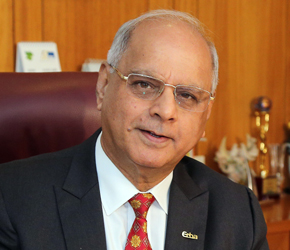 Union Budget 2022 – Affordable and Accessible ‘Made in India’ medical devices is the need of the hour for effective healthcare delivery The Prime Minister recently launched the Pradhan Mantri Atmanirbhar Swasth Bharat Yojana (PMASBY), worth ₹64,180 crore, to strengthen the health care infrastructure across the country. It is one of the largest pan-India schemes for strengthening and development of primary, secondary, and tertiary healthcare infrastructure across the country. It will also help strengthen the existing national institutions, create new institutions, and detect and cure new diseases. In addition, it also includes the establishment of 17,000 rural and 11,000 urban health and wellness centers. All of us believe it is time to strengthen the medical infrastructure at the ground level. At the moment, the diagnostic industry is one of the fastest growing industries in the country and is expected to grow at a CAGR of 20% over the next five years. A shift in mind set towards disease awareness and early detection is creating opportunities for innovation to meet the high demands. Further, the pandemic has highlighted the critical role of diagnostics in disease prevention. Access to diagnostics will deepen beyond the tier I and II cities. Without adequate diagnostic tests, it would have been impossible to control the spread of COVID-19. 2022 will see an increasing number of labs being equipped to do more in less time. The focus will be on digitization and lab automation to create an ecosystem where patient data can transit seamlessly between pathologists and specialists. The industry looks forward to crucial government support that is needed to help this industry grow for the Atma Nirbhar Bharat. The government also needs to follow the WHO recommendation for making essential diagnostics available free of cost to everyone in the country. While technology is expected to continue to make in-roads, I reiterate that affordability and accessibility of healthcare need to take centre-stage. I am hoping that a major focus in the Union Budget 2022 will be given to the diagnostic industry, as it is the starting point to building a Healthy and Happy India. As per WHO, over 70% of treatment decisions depend on diagnostic tests. While Make in India continues to remain the central focus for the government, as an Indian manufacturer, we wish there would have been some more efforts on encouraging Make in India and reducing the dependency on imports. Make in India is the only way to make healthcare more affordable in India. However, at present there is very little incentive for a medical devices company to change from importing and begin Make in India. As an industry body member, I expect the following from the Union Budget 2022, to encourage Make in India: Why India should support development of Diagnostic industry?: As the COVID pandemic has shown, diagnostic tests are absolutel y essential for preventing spread of every disease. We all know that not only prevention is better than cure but prevention costs just 2% of what it costs to cure. Hence it is essential that a developing country like India should spend more money on prevention of disease than on curing it. High import dependency: Presently, India has a high medical device import dependency of 86% as per Pharma Bureau and NITI Aayog report. Hence it is absolutely essential for India to ensure faster Make in India initiatives and achieve at least 50% local production. High GST of 18% on diagnostic equipment: It is unbelievable that the Government is charging the same high GST rate of 18% even on essential diagnostic equipment as it does on non-essential and luxury products. We have been demanding reduction in the GST rate on medical supplies, diagnostic equipment, and devices from the current 18 percent to 5 percent. This would help in making affordable healthcare a reality. Reality is that introduction of GST has worked against Make in India. The implementation of GST has led to imported devices being cheaper by 11%. In addition, there being no import duty on blood analyzers, makes it difficult for the Indian manufacturers to compete with the cheaper imports. The interests of the domestic manufacturers need to be protected through a revision in the GST regime so that not everyone gets the benefit of input credit. Providing free healthcare to every citizen of India is the Government’s constitutional responsibility. It needs to focus on reducing the medical expenditure burden on general public, which currently bears almost 70 percent of all medical expenditure. While the government has exempted the healthcare services from GST, the taxation on the medical supplies and devices, ultimately is a hindrance in bringing down the cost of treatment. The common man can get some relief from this burden by a reduction in the GST rate on medical supplies, diagnostic equipment and devices. The GST rate, which currently stands at 18 percent, should be no more than 5 percent. Inverted import duty structure: Even now, the import duty on several raw materials is higher than that on finished products. In fact, India’s import duty is the lowest among BRIC countries, at zero to 7.5 percent – making it cheaper to import devices rather than encouraging home grown, cutting edge technology Indian devices. This should be raised to 15-20 per cent, as a lower import duty dissuades manufacturers from producing them in India. To reduce the dependency on imports, we expected the Government to provide reasonable tariff protection for enabling Make in India. Production-Linked Incentive (PLI) Scheme: At present the PLI rate for diagnostic products is just 3-5%. For Make in India to succeed this rate needs to be increased to at least 15%. This will make Indian manufacturers globally competitive, attract investment in the areas of core competency and cutting-edge technology; ensure efficiencies; create economies of scale; enhance exports. R&D: Today medical technology is developing very fast. To keep up with the changing technology, Indian manufacturers need to build R&D infrastructure which needs huge amount of investment in R&D. To encourage R&D in India, we expect the Government to provide 200% weighted tax deduction on expenditure made on R&D of medical devices. Encouraging exports: Introduction of export incentives would lead to further encouraging this growth engine for the economy and help India become a global leader in medical devices. The above changes can fulfill the Government’s commitment to an affordable healthcare system for all.
Union Budget 2022 – Affordable and Accessible ‘Made in India’ medical devices is the need of the hour for effective healthcare delivery The Prime Minister recently launched the Pradhan Mantri Atmanirbhar Swasth Bharat Yojana (PMASBY), worth ₹64,180 crore, to strengthen the health care infrastructure across the country. It is one of the largest pan-India schemes for strengthening and development of primary, secondary, and tertiary healthcare infrastructure across the country. It will also help strengthen the existing national institutions, create new institutions, and detect and cure new diseases. In addition, it also includes the establishment of 17,000 rural and 11,000 urban health and wellness centers. All of us believe it is time to strengthen the medical infrastructure at the ground level. At the moment, the diagnostic industry is one of the fastest growing industries in the country and is expected to grow at a CAGR of 20% over the next five years. A shift in mind set towards disease awareness and early detection is creating opportunities for innovation to meet the high demands. Further, the pandemic has highlighted the critical role of diagnostics in disease prevention. Access to diagnostics will deepen beyond the tier I and II cities. Without adequate diagnostic tests, it would have been impossible to control the spread of COVID-19. 2022 will see an increasing number of labs being equipped to do more in less time. The focus will be on digitization and lab automation to create an ecosystem where patient data can transit seamlessly between pathologists and specialists. The industry looks forward to crucial government support that is needed to help this industry grow for the Atma Nirbhar Bharat. The government also needs to follow the WHO recommendation for making essential diagnostics available free of cost to everyone in the country. While technology is expected to continue to make in-roads, I reiterate that affordability and accessibility of healthcare need to take centre-stage. I am hoping that a major focus in the Union Budget 2022 will be given to the diagnostic industry, as it is the starting point to building a Healthy and Happy India. As per WHO, over 70% of treatment decisions depend on diagnostic tests. While Make in India continues to remain the central focus for the government, as an Indian manufacturer, we wish there would have been some more efforts on encouraging Make in India and reducing the dependency on imports. Make in India is the only way to make healthcare more affordable in India. However, at present there is very little incentive for a medical devices company to change from importing and begin Make in India. As an industry body member, I expect the following from the Union Budget 2022, to encourage Make in India: Why India should support development of Diagnostic industry?: As the COVID pandemic has shown, diagnostic tests are absolutel y essential for preventing spread of every disease. We all know that not only prevention is better than cure but prevention costs just 2% of what it costs to cure. Hence it is essential that a developing country like India should spend more money on prevention of disease than on curing it. High import dependency: Presently, India has a high medical device import dependency of 86% as per Pharma Bureau and NITI Aayog report. Hence it is absolutely essential for India to ensure faster Make in India initiatives and achieve at least 50% local production. High GST of 18% on diagnostic equipment: It is unbelievable that the Government is charging the same high GST rate of 18% even on essential diagnostic equipment as it does on non-essential and luxury products. We have been demanding reduction in the GST rate on medical supplies, diagnostic equipment, and devices from the current 18 percent to 5 percent. This would help in making affordable healthcare a reality. Reality is that introduction of GST has worked against Make in India. The implementation of GST has led to imported devices being cheaper by 11%. In addition, there being no import duty on blood analyzers, makes it difficult for the Indian manufacturers to compete with the cheaper imports. The interests of the domestic manufacturers need to be protected through a revision in the GST regime so that not everyone gets the benefit of input credit. Providing free healthcare to every citizen of India is the Government’s constitutional responsibility. It needs to focus on reducing the medical expenditure burden on general public, which currently bears almost 70 percent of all medical expenditure. While the government has exempted the healthcare services from GST, the taxation on the medical supplies and devices, ultimately is a hindrance in bringing down the cost of treatment. The common man can get some relief from this burden by a reduction in the GST rate on medical supplies, diagnostic equipment and devices. The GST rate, which currently stands at 18 percent, should be no more than 5 percent. Inverted import duty structure: Even now, the import duty on several raw materials is higher than that on finished products. In fact, India’s import duty is the lowest among BRIC countries, at zero to 7.5 percent – making it cheaper to import devices rather than encouraging home grown, cutting edge technology Indian devices. This should be raised to 15-20 per cent, as a lower import duty dissuades manufacturers from producing them in India. To reduce the dependency on imports, we expected the Government to provide reasonable tariff protection for enabling Make in India. Production-Linked Incentive (PLI) Scheme: At present the PLI rate for diagnostic products is just 3-5%. For Make in India to succeed this rate needs to be increased to at least 15%. This will make Indian manufacturers globally competitive, attract investment in the areas of core competency and cutting-edge technology; ensure efficiencies; create economies of scale; enhance exports. R&D: Today medical technology is developing very fast. To keep up with the changing technology, Indian manufacturers need to build R&D infrastructure which needs huge amount of investment in R&D. To encourage R&D in India, we expect the Government to provide 200% weighted tax deduction on expenditure made on R&D of medical devices. Encouraging exports: Introduction of export incentives would lead to further encouraging this growth engine for the economy and help India become a global leader in medical devices. The above changes can fulfill the Government’s commitment to an affordable healthcare system for all.
As an industry body member, I expect the following from the Union Budget 2022, to encourage Make in India: Why India should support development of Diagnostic industry?: As the COVID pandemic has shown, diagnostic tests are absolutely essential for preventing spread of every disease. We all know that not only prevention is better than cure but prevention costs just 2% of what it costs to cure. Hence it is essential that a developing country like India should spend more money on prevention of disease than on curing it. High import dependency: Presently, India has a high medical device import dependency of 86% as per Pharma Bureau and NITI Aayog report. Hence it is absolutely essential for India to ensure faster Make in India initiatives and achieve at least 50% local production. High GST of 18% on diagnostic equipment: It is unbelievable that the Government is charging the same high GST rate of 18% even on essential diagnostic equipment as it does on non-essential and luxury products. We have been demanding reduction in the GST rate on medical supplies, diagnostic equipment, and devices from the current 18 percent to 5 percent. This would help in making affordable healthcare a reality. Reality is that introduction of GST has worked against Make in India. The implementation of GST has led to imported devices being cheaper by 11%. In addition, there being no import duty on blood analyzers, makes it difficult for the Indian manufacturers to compete with the cheaper imports. The interests of the domestic manufacturers need to be protected through a revision in the GST regime so that not everyone gets the benefit of input credit. Providing free healthcare to every citizen of India is the Government’s constitutional responsibility. It needs to focus on reducing the medical expenditure burden on general public, which currently bears almost 70 percent of all medical expenditure. While the government has exempted the healthcare services from GST, the taxation on the medical supplies and devices, ultimately is a hindrance in bringing down the cost of treatment. The common man can get some relief from this burden by a reduction in the GST rate on medical supplies, diagnostic equipment and devices. The GST rate, which currently stands at 18 percent, should be no more than 5 percent. Inverted import duty structure: Even now, the import duty on several raw materials is higher than that on finished products. In fact, India’s import duty is the lowest among BRIC countries, at zero to 7.5 percent – making it cheaper to import devices rather than encouraging home grown, cutting edge technology Indian devices. This should be raised to 15-20 per cent, as a lower import duty dissuades manufacturers from producing them in India. To reduce the dependency on imports, we expected the Government to provide reasonable tariff protection for enabling Make in India. Production-Linked Incentive (PLI) Scheme: At present the PLI rate for diagnostic products is just 3-5%. For Make in India to succeed this rate needs to be increased to at least 15%. This will make Indian manufacturers globally competitive, attract investment in the areas of core competency and cutting-edge technology; ensure efficiencies; create economies of scale; enhance exports. R&D: Today medical technology is developing very fast. To keep up with the changing technology, Indian manufacturers need to build R&D infrastructure which needs huge amount of investment in R&D. To encourage R&D in India, we expect the Government to provide 200% weighted tax deduction on expenditure made on R&D of medical devices. Encouraging exports: Introduction of export incentives would lead to further encouraging this growth engine for the economy and help India become a global leader in medical devices. The above changes can fulfill the Government’s commitment to an affordable healthcare system for all.
…………………………………………………………………………………………………………………………………………………………………………………………………………………………………………….
Gaurav Agarwal
MD, IITPL – Innovation Imaging Technologies Pvt. Ltd. Director
– Innvolution Healthcare

1. Deduct R&D expenses of companies that manufacture high import Dependence devices from their taxable income. 2. Implement phased increase on BCD for highly import-dependent devices like MRI, CT, Cath Lab, etc. 3. Reduce BCD on components of devices with high import dependence/national need like stents, ultrasound, cath labs, etc 4. Remove inverted duty structure on stents – imported finished products are at zero BCD and, components are at 11-12%. 5. A separate fund of funds for the Medtech Start-up eco-system must be created. 6. Modify existing PLI schemes to make them more lucrative for Startups. Current schemes are more favorable for established houses. 7. in medical devices of national importance, a convertible loan agreement (CLA) should be considered, like in Europe, up to 1 mn dollars to cover the cost of technology transfer, prototyping, and validation.
…………………………………………………………………………………………………………………………………………………………………………………………………………………………………………….
Vivek Tiwari
CEO, MEDIKABAZAAR
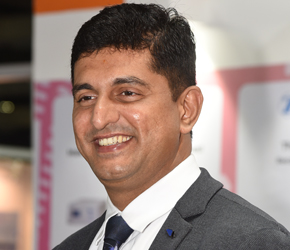 With the COVID-19 pandemic testing even the more developed healthcare systems globally, the foundations of India’s healthcare system have naturally also been shaken. While the healthcare system in India managed to withstand the pandemic to a large extent, it did expose the serious gap in our healthcare delivery capabilities and brought forward the dire need to significantly ramp up health infra in India especially beyond Tier 1 & 2 cities. The budget outlay for Healthcare as percent of GDP is far below global levels and Government should announce at least a 15-20 per cent rise in healthcare expenditure. As COVID-19 pandemic brought forth the harsh reality of inadequate healthcare system in India, the prime objective of the government in this budget should be to accelerate public, private and venture capital investments in the sector which can facilitate and drive creation of new healthcare infrastructure and strengthen critical infrastructure across hospitals, diagnostic labs and supply chains. The rise in investment in healthcare will have a multiplier effect on economy and it will help address the structural gaps and fast track the growth of healthcare sector to required levels.
With the COVID-19 pandemic testing even the more developed healthcare systems globally, the foundations of India’s healthcare system have naturally also been shaken. While the healthcare system in India managed to withstand the pandemic to a large extent, it did expose the serious gap in our healthcare delivery capabilities and brought forward the dire need to significantly ramp up health infra in India especially beyond Tier 1 & 2 cities. The budget outlay for Healthcare as percent of GDP is far below global levels and Government should announce at least a 15-20 per cent rise in healthcare expenditure. As COVID-19 pandemic brought forth the harsh reality of inadequate healthcare system in India, the prime objective of the government in this budget should be to accelerate public, private and venture capital investments in the sector which can facilitate and drive creation of new healthcare infrastructure and strengthen critical infrastructure across hospitals, diagnostic labs and supply chains. The rise in investment in healthcare will have a multiplier effect on economy and it will help address the structural gaps and fast track the growth of healthcare sector to required levels.
…………………………………………………………………………………………………………………………………………………………………………………………………………………………………………….
HIMANSHU BAID
Chairman, NMTF, CII & Managing Director, Poly Medicure Ltd.
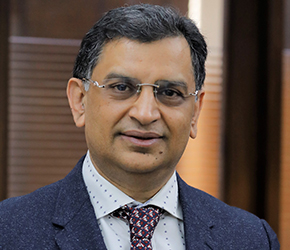 The pandemic has ushered in an era of digital and technological innovations and advancements and we can confidently anticipate a major transformation in healthcare delivery in the country with the right policy and fiscal support for the sector. Over the last few years, healthcare sector has received adequate attention in the Union Budgets. This year also, we anticipate that the Government will introduce measures to improve the quality of healthcare and make it more affordable. The major expectation is for increased allocation of budget to the healthcare sector. Healthcare expenditure and investment should be increased to 2.5% from current spending of 1.25% of GDP. More focused efforts are required to ensure India’s transition from an importer to an exporter in Medical Devices Sector. The Govt. should consider increasing export incentives under RoDTEP to 2% from the existing 0.5%, to encourage exports from India and also help companies to become more competitive in global markets. Govt. should allow extra depreciation of 15% on Capex investments above Rs 25 crores PA for next 3 years for existing companies to push new investments. This will not only reduce the tax burden for existing companies but also spur demand of capital goods. Currently only new companies are entitled for reduced tax rate of 15%. To boost R & D in Medical Technology sector, Govt. should restore 200% weighted tax deduction against R & D expenses since it is critical for new technology development and innovation. Medical Devices and Equipment sector has 3 slab rates of GST – 5% , 12% and 18%. This should be harmonized to a uniform rate of 12%. Product / Category specific Industrial Zones/ Parks with common infrastructure can give impetus to medical device manufacturing. Although current attention is on Covid-19 pandemic, it is equally important to increase the proportion of expenditure on preventive healthcare and wellness. This will help ease the burden on existing healthcare infrastructure of non-communicable and lifestyle diseases. There is a severe shortage of skilled manpower in the country. Extra funds must be allocated for skilling & up-skilling of clinicians, nurses, paramedical staff and other care providers. There is a need to set up new Medical Colleges & Nursing Schools, and incentivize them. Hope healthcare finds its due for the deserved growth, in the upcoming budget.
The pandemic has ushered in an era of digital and technological innovations and advancements and we can confidently anticipate a major transformation in healthcare delivery in the country with the right policy and fiscal support for the sector. Over the last few years, healthcare sector has received adequate attention in the Union Budgets. This year also, we anticipate that the Government will introduce measures to improve the quality of healthcare and make it more affordable. The major expectation is for increased allocation of budget to the healthcare sector. Healthcare expenditure and investment should be increased to 2.5% from current spending of 1.25% of GDP. More focused efforts are required to ensure India’s transition from an importer to an exporter in Medical Devices Sector. The Govt. should consider increasing export incentives under RoDTEP to 2% from the existing 0.5%, to encourage exports from India and also help companies to become more competitive in global markets. Govt. should allow extra depreciation of 15% on Capex investments above Rs 25 crores PA for next 3 years for existing companies to push new investments. This will not only reduce the tax burden for existing companies but also spur demand of capital goods. Currently only new companies are entitled for reduced tax rate of 15%. To boost R & D in Medical Technology sector, Govt. should restore 200% weighted tax deduction against R & D expenses since it is critical for new technology development and innovation. Medical Devices and Equipment sector has 3 slab rates of GST – 5% , 12% and 18%. This should be harmonized to a uniform rate of 12%. Product / Category specific Industrial Zones/ Parks with common infrastructure can give impetus to medical device manufacturing. Although current attention is on Covid-19 pandemic, it is equally important to increase the proportion of expenditure on preventive healthcare and wellness. This will help ease the burden on existing healthcare infrastructure of non-communicable and lifestyle diseases. There is a severe shortage of skilled manpower in the country. Extra funds must be allocated for skilling & up-skilling of clinicians, nurses, paramedical staff and other care providers. There is a need to set up new Medical Colleges & Nursing Schools, and incentivize them. Hope healthcare finds its due for the deserved growth, in the upcoming budget.
…………………………………………………………………………………………………………………………………………………………………………………………………………………………………………….
Dr. Girdhar Gyani
Director General
Association of Healthcare Providers
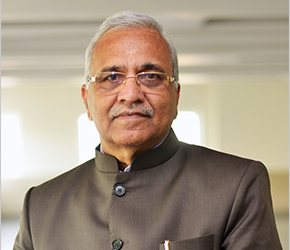 Key Budget Expectations for Healthy India As Government is committed to achieve universal health coverage for citizens of India, it is time that we go by fundamentals. India currently has about 1.5 beds per 1000 population, whereas WHO norm for developing nations is 3.5. Accessibility of care is another building block and India has very poor track record. Hon Prime Minister during launch of AB had wished to have 3000 new mid-size hospitals in Tier-III towns. The budget therefore must provide soft loans for private sector to establish 100 bedded hospitals in Tier-III and deficient regions. This should be supplemented by providing electricity at concessional rates and extending TAX holiday for 5-years. Making available of healthcare professionals should be another top priority in the budget. There is acute shortage of specialists. Budget should make provision for opening up of at least one exclusive PG College like PGI Chandigarh in each state.
Key Budget Expectations for Healthy India As Government is committed to achieve universal health coverage for citizens of India, it is time that we go by fundamentals. India currently has about 1.5 beds per 1000 population, whereas WHO norm for developing nations is 3.5. Accessibility of care is another building block and India has very poor track record. Hon Prime Minister during launch of AB had wished to have 3000 new mid-size hospitals in Tier-III towns. The budget therefore must provide soft loans for private sector to establish 100 bedded hospitals in Tier-III and deficient regions. This should be supplemented by providing electricity at concessional rates and extending TAX holiday for 5-years. Making available of healthcare professionals should be another top priority in the budget. There is acute shortage of specialists. Budget should make provision for opening up of at least one exclusive PG College like PGI Chandigarh in each state.
…………………………………………………………………………………………………………………………………………………………………………………………………………………………………………….
Dr GSK Velu
CHAIRMAN & MANAGING DIRECTOR, TRIVITRON HEALTHCARE & NEUBERG DIAGNOSTICS
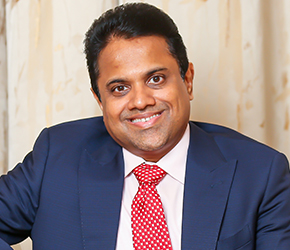 GOVERNMENT OF INDIA INITIATIVES FOR HEALTHCARE ECOSYSTEM • Due to the Covid-19 pandemic, the state of healthcare in India has once again come under the spotlight. The industry as well as the government have been proactive in not only mitigating the crisis, but at the same time, taking initiatives to build a robust healthcare system across the country. Government of India has shown support for the industry by making and implementing new-age policies while at the same time, making an extra effort to save the country from the pandemic. • Due to the new-age policies by Government, the healthcare industry has grown to be one of the most essential industries in the country. In 2022, the market is estimated to have tripled to Rs. 8.6 trillion (US$ 133.44 billion). The industry is expanding rapidly as a result of improved coverage, services, and increased spending by both public and private entities. • Government’s recent initiatives for the healthcare industry has clearly proven the importance that the industry deserves. A number of policies and packages were created, including production-linked programme for APIs/KSMs and medical devices, robust plan for pharmaceuticals as well as advancement of Bulk Drug Parks and Medical Device Parks. These launches were in line with the ‘Atma Nirbhar Bharat’ which attracted domestic and foreign investors to participate in this industry. The government of India also allocated funds to promote the existing ‘National Health Mission’ which is aimed at developing primary, secondary and tertiary healthcare system in the country. Apart from this, another path breaking initiative by the government which will mostly boost the domestic healthcare industry is the credit incentive program worth Rs. 50,000 Crore (US$ 6.8 billion). Under this program, companies can leverage the fund to expand hospital capacity or medical supplies. The program emphasizes on strengthening healthcare infrastructure specifically in the rural areas during COVID-19 crisis. It is also one of the safest credit program since the guarantor in this case is the government itself. • By undertaking deep structural and sustained reforms to strengthen the sector, the government has not left any stone unturned when it comes to fighting this outbreak. Covid-19 prevented people from physically accessing hospitals, and the situation was even worse in far reaching regions of the country. In such a scenario, the Health Ministry came up with “eSanjeevni Telemedicine Service” which was developed with the aim of providing medical consultations from the safety of the home. So far, the service has successfully executed more than 12 million tele-consultations. • One of the best efforts by the government has been the development and implementation of the CoWIN platform. In a country of ~140 crore citizens, simply having enough stock of vaccines is not the only important thing. Its timely distribution, and access have high importance. The platform has been successful in smooth delivery and inoculation of vaccine. Quite recently, India had administered 150 crore doses in total, all thanks to the efficient CoWIN platform. This success was acknowledged by several countries across the globe and many have also shown keen interest in developing a similar platform for themselves.
GOVERNMENT OF INDIA INITIATIVES FOR HEALTHCARE ECOSYSTEM • Due to the Covid-19 pandemic, the state of healthcare in India has once again come under the spotlight. The industry as well as the government have been proactive in not only mitigating the crisis, but at the same time, taking initiatives to build a robust healthcare system across the country. Government of India has shown support for the industry by making and implementing new-age policies while at the same time, making an extra effort to save the country from the pandemic. • Due to the new-age policies by Government, the healthcare industry has grown to be one of the most essential industries in the country. In 2022, the market is estimated to have tripled to Rs. 8.6 trillion (US$ 133.44 billion). The industry is expanding rapidly as a result of improved coverage, services, and increased spending by both public and private entities. • Government’s recent initiatives for the healthcare industry has clearly proven the importance that the industry deserves. A number of policies and packages were created, including production-linked programme for APIs/KSMs and medical devices, robust plan for pharmaceuticals as well as advancement of Bulk Drug Parks and Medical Device Parks. These launches were in line with the ‘Atma Nirbhar Bharat’ which attracted domestic and foreign investors to participate in this industry. The government of India also allocated funds to promote the existing ‘National Health Mission’ which is aimed at developing primary, secondary and tertiary healthcare system in the country. Apart from this, another path breaking initiative by the government which will mostly boost the domestic healthcare industry is the credit incentive program worth Rs. 50,000 Crore (US$ 6.8 billion). Under this program, companies can leverage the fund to expand hospital capacity or medical supplies. The program emphasizes on strengthening healthcare infrastructure specifically in the rural areas during COVID-19 crisis. It is also one of the safest credit program since the guarantor in this case is the government itself. • By undertaking deep structural and sustained reforms to strengthen the sector, the government has not left any stone unturned when it comes to fighting this outbreak. Covid-19 prevented people from physically accessing hospitals, and the situation was even worse in far reaching regions of the country. In such a scenario, the Health Ministry came up with “eSanjeevni Telemedicine Service” which was developed with the aim of providing medical consultations from the safety of the home. So far, the service has successfully executed more than 12 million tele-consultations. • One of the best efforts by the government has been the development and implementation of the CoWIN platform. In a country of ~140 crore citizens, simply having enough stock of vaccines is not the only important thing. Its timely distribution, and access have high importance. The platform has been successful in smooth delivery and inoculation of vaccine. Quite recently, India had administered 150 crore doses in total, all thanks to the efficient CoWIN platform. This success was acknowledged by several countries across the globe and many have also shown keen interest in developing a similar platform for themselves.
PRE BUDGET EXPECTATION 2022-23 • Tax break for 10 years for setting up facilities in upcoming economic zones, MedTech Parks & MedTech Manufacturing facilities, similar to the tax break given for Pharma – API facilities at Baddi, Himachal Pradesh. • Increase in customs duty for finished medical equipment / devices. Reduction in Customs duty for components and SKD imports to promote manufacturing in India. • Government grants to support R&D and Manufacturing Facility setup for important medical equipment like IVD instruments, Cath Lab, CT Scanners, MRI scanners, Ultrasound, Patient Monitor, Ventilators etc. • Tax breaks and incentives for private healthcare infrastructure creation in Tier 3 & 4 towns. This will enable the healthcare reach to the deepest level in the country. • Increase in Income Tax Exemption limits for Medical Insurance. In view of the Covid pandemic, the Insurance companies have increased the premium and in view of the above the Insurance premium Tax Exemption Limits have to be appropriately increased for all classes. • 1 to 2% GST for health services to avail GST input credits by health services industry. GST has to be reduced significantly across all products and services, to spur consumer spending. Healthcare services have to be brought under GST regime with 1% levy so that they are able to avail the input credit available, which go as waste now , resulting in higher cost of services. If this is done, the overall cost of Healthcare services will actually come down benefitting larger section of the people.
…………………………………………………………………………………………………………………………………………………………………………………………………………………………………………….
Veena kohli
CEO at Vanguard Diagnostics
 The Indian diagnostics industry is eagerly looking forward to the correction of the ‘inverted duty structure’, in this year’s Budget. Currently, the basic customs duty on diagnostics Instruments is 0% while that on the components and spare parts ranges between 7.5 to 15%, thereby representing a classic case of the ‘ inverted duty structure’. The import duty on instruments should be increased in a phasic manner from 5% this year to 15% during the next couple of years. The import duty on all components and spare parts should be reduced to 2.5%. This long-standing requirement of the industry will encourage local manufacturing of diagnostics instruments and reduce import dependence, which currently stands at a colossal figure of 80%.
The Indian diagnostics industry is eagerly looking forward to the correction of the ‘inverted duty structure’, in this year’s Budget. Currently, the basic customs duty on diagnostics Instruments is 0% while that on the components and spare parts ranges between 7.5 to 15%, thereby representing a classic case of the ‘ inverted duty structure’. The import duty on instruments should be increased in a phasic manner from 5% this year to 15% during the next couple of years. The import duty on all components and spare parts should be reduced to 2.5%. This long-standing requirement of the industry will encourage local manufacturing of diagnostics instruments and reduce import dependence, which currently stands at a colossal figure of 80%.
…………………………………………………………………………………………………………………………………………………………………………………………………………………………………………….
Dinesh Chauhan
CEO, CORE Diagnostics
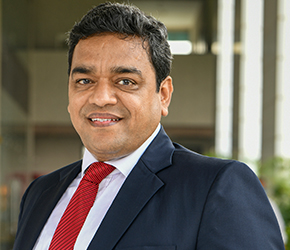 The healthcare sector witnessed a worst hit amidst COVID-19 pandemic, thereby, driving the need for a contingency plan towards recovery and revival of the nation. Although healthcare has been a part of country’s development plan with comprehensive initiatives like Ayushman Bharat, National Digital Health Mission, Swasthya Suraksha Yojna and Mission Covid Suraksha and more, there is a need to allocate additional funds that would ensure universal health coverage to all, especially underprivileged. While it was aptly reflected in the Union budget 2021 which demonstrated deep commitment towards the sector however, there is a lot more to be done. The pandemic has restored the fact that there is an urgent need to bolster innovative, tech-based, large-scale, and affordable healthcare solution in India to ensure quality treatment and cure, especially with the occurrence of the new variants. This requires significant investments in funding research and development sector, which ultimately need public-private partnership push to capture greater space in the heath sector. Lastly, we expect the budget to bring in incentives to enable rapid growth of the sector, in addition to helping more people to get preventive screening and testing done at early stage.
The healthcare sector witnessed a worst hit amidst COVID-19 pandemic, thereby, driving the need for a contingency plan towards recovery and revival of the nation. Although healthcare has been a part of country’s development plan with comprehensive initiatives like Ayushman Bharat, National Digital Health Mission, Swasthya Suraksha Yojna and Mission Covid Suraksha and more, there is a need to allocate additional funds that would ensure universal health coverage to all, especially underprivileged. While it was aptly reflected in the Union budget 2021 which demonstrated deep commitment towards the sector however, there is a lot more to be done. The pandemic has restored the fact that there is an urgent need to bolster innovative, tech-based, large-scale, and affordable healthcare solution in India to ensure quality treatment and cure, especially with the occurrence of the new variants. This requires significant investments in funding research and development sector, which ultimately need public-private partnership push to capture greater space in the heath sector. Lastly, we expect the budget to bring in incentives to enable rapid growth of the sector, in addition to helping more people to get preventive screening and testing done at early stage.
…………………………………………………………………………………………………………………………………………………………………………………………………………………………………………….
Manish Rastogi
Policy Think Tank
Healthcare Continuum
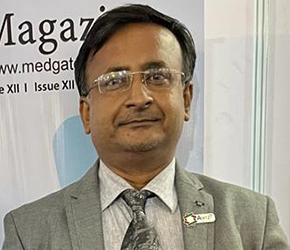 Responsibility to Health Nudge, Recognise and Incentivise….proposed SDG No 18 This recommendation is strongly rooted in behavioural economics revolutionary concept Nudge and our Honourable Prime Minister’s well received clarion call for successful implementation of Swachh Bharat Mission, and voluntarily relinquishing gas subsidy by crores of Indian households. This shows that good Intent is always followed by good content. Responsibility to Health is crucial at this juncture and needs complete civic adherence as pandemic management has taken its heavy toll on scarce resources planned and reserved for all around development of our nation. Last two years have amply proved and established the fact that except complete civic obedience to preventive and pre-emptive measures, nothing can effectively contain pandemic flux and mutations. Responsibility to Health seems to be only Call and Wall against all health hazards and threats ever. An institutional nudge and mechanism shall immensely strengthen healthcare and whole economic ecosystem. Right to Responsibility may also be proposed as an extension of 17 Sustainable Development Goals and named as SDG18.
Responsibility to Health Nudge, Recognise and Incentivise….proposed SDG No 18 This recommendation is strongly rooted in behavioural economics revolutionary concept Nudge and our Honourable Prime Minister’s well received clarion call for successful implementation of Swachh Bharat Mission, and voluntarily relinquishing gas subsidy by crores of Indian households. This shows that good Intent is always followed by good content. Responsibility to Health is crucial at this juncture and needs complete civic adherence as pandemic management has taken its heavy toll on scarce resources planned and reserved for all around development of our nation. Last two years have amply proved and established the fact that except complete civic obedience to preventive and pre-emptive measures, nothing can effectively contain pandemic flux and mutations. Responsibility to Health seems to be only Call and Wall against all health hazards and threats ever. An institutional nudge and mechanism shall immensely strengthen healthcare and whole economic ecosystem. Right to Responsibility may also be proposed as an extension of 17 Sustainable Development Goals and named as SDG18.
…………………………………………………………………………………………………………………………………………………………………………………………………………………………………………….
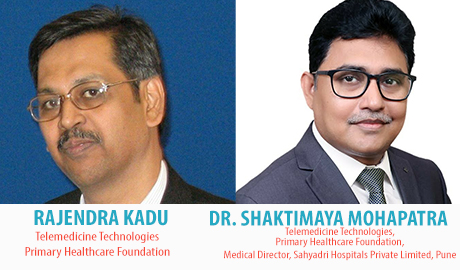
India: Centre of Telemedicine Excellence
India has tremendous potential and access to global opportunity in Telemedicine in such vulnerable phase our planet has been passing through in unpredictable and disruptive pandemic times. A concerted Telemedicine policy endeavour and directive shall enable Indian healthcare industry to cater to global populations suffering from incremental Global Burden of Disease (GBD) Backed by robust and world class IT infrastructure capabilities and internationally acclaimed credentials of Indian medical fraternity , India can be global hub of Telemedicine which would also enhance the medical tourism traffic to India. Telemedicine along with medical tourism is likely to handsomely contribute to foreign reserves in the same way as that of ITes.
…………………………………………………………………………………………………………………………………………………………………………………………………………………………………………….
Jagruti Bhatia & Dr. Rajesh Shah
NCD Outreach
Primary Healthcare Foundation-Pune
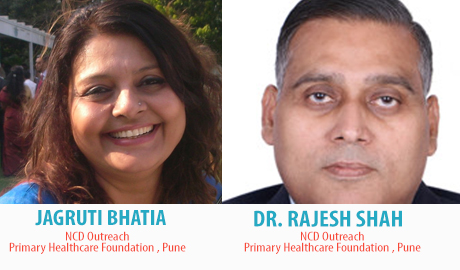 Setting up NCD Clinics
Setting up NCD Clinics
Recommending a policy for implementation and monitoring of National Program for Prevention Control of Cancer, Diabetes, CVDs and Stroke (NPCDCS) under which it may be proposed to set up dedicated NCD(Non-Communicable Diseases) clinics through local municipal and/or health bodies, or incorporate in the Wellness Centres or at PHC / CHC level. More over such dedicated NCD clinics can also be set up under PPP mode. • Regular screening for NCDs across urban and rural PHCs and CHCs via NHM / NUHM, needs to be prioritised to catch up lost time in the wake of resources deployed in dealing with pandemic emergency. • In current Pandemic times it is important to refer to Mental Health Act and provision a position of a Mental Health professional either at each PHC / CHC or Wellness centre, in accordance with National Mental Health Program (NMHP) and National Program for Health Care of Elderly (NPHCE) • Encourage implementation of the announced increase in VGF funding for healthcare PPPs. • Upgrade public health infrastructure through augmentation of Intensive Care Units in District hospitals as internally managed units or by deploying e-ICUs technologies through telemedicine PPPs.
…………………………………………………………………………………………………………………………………………………………………………………………………………………………………………….
Dr. Parvez Ahmad Prabhu Tiwari
Dirctor, Sustainable Medical Education and
Chandan Multi-speciality Institutional Healthcare
Hospital, Lucknow Primary Healthcare Foundation, Pune
 Sustainable Medical College -PHC & CHC Healthcare Continuum
Sustainable Medical College -PHC & CHC Healthcare Continuum
NMC / Government authorities need to hand hold new medical colleges to help their sustainability, and enable them to render quality and effective medical education through internal empowered medical college council. Government run PHCs/CHCs need to be linked to the private medical colleges ( preferably latter to be incentivsed too ) or run on PPP mode (with medical colleges) to urgently attend the impending and expanding neccessity of Rural Health Training Centres and Urban Health Training Centres as described by NMC notification, 2020. Private medical colleges’ sustainability needs to be further facilitated by NMC’s policy catalyst on medical college norms and guidelines, timely assessment, robust & Integrated assessment process and timely resolution of the issues.
…………………………………………………………………………………………………………………………………………………………………………………………………………………………………………….
Jatin mahajan
MD, J.Mitra & Co.
 The healthcare industry, particularly the medical devices/diagnostics industry, has been spearheading the fight against the corona pandemic. As the absolute frontline workers in the battle to control the pandemic, the industry has played a stellar role. The pandemic has brought this hitherto backend segment right into the forefront. Diagnostics drive around 70% of all therapeutic decisions. Yet, domestic production accounts for only 20 %, and there is an 80 % dependency on imports. The Indian MedTech and diagnostics industry has driven the government’s initiatives like Aatmanirbhar Bharat and Ayushman Bharat. Keeping in mind the significance of the medical devices/diagnostics industry, we have continued to liaise with the government/policy drivers to create the most powerful and effective impact for the industry and the people we serve. To boost the MedTech and diagnostics sector in the country, we have the following recommendations for the Government of India for the forthcoming Budget 2022. * Inverted duty structure & custom duty– this anomaly needs to be addressed. Zero custom duty on imported products has led to uncontrolled dumping of non-standardized Chinese products in the Indian market. This negatively impacts Indian manufacturers who meet all quality standards and duty structures imposed by the government. Also, the duty on finished imported products is lower than the import of raw material. This does not favor domestic production and is irrationally skewed toward importers. It is precisely this reason which has made us dependent on imports and not self-reliant through domestic manufacturing. – Rationalization of Trade Margins – Importers sell their products at 10x – 20x of the landing price in India. This massive profiteering (especially at the cost of the customs duty) must be curbed. Therefore, MRP for all such imported products must be capped at 4x of the landing price. * ICMED as the Umbrella Certification – There should be a robust strategy for establishing ICMED as a strong Indian certification mark equivalent to the likes of CE and FDA. This should be implemented for all domestic and imported devices. This will bring about standardization and raise the quality of the medical devices available in the Indian market. This will also curb the proliferation of inferior and low-quality Chinese products that are rampantly being dumped in the Indian market. * Infrastructure for Manufacturing – Development of Medical Devices manufacturing hubs and special economic zones catering to the segment needs to be accelerated. They will provide the right mix of shared infrastructure, facilities, and subsidies for technological upgradation. This will increase sustainability and economies of scale and boost the segment’s growth. – Other aspects critical for winning the Make-in-India race – Ensuring cost advantage over China; faster government permissions and single-window clearances; ease of doing business; adequate financing; competent infrastructure; soft loans with more extended repayments; should be key focus areas in the coming budget.
The healthcare industry, particularly the medical devices/diagnostics industry, has been spearheading the fight against the corona pandemic. As the absolute frontline workers in the battle to control the pandemic, the industry has played a stellar role. The pandemic has brought this hitherto backend segment right into the forefront. Diagnostics drive around 70% of all therapeutic decisions. Yet, domestic production accounts for only 20 %, and there is an 80 % dependency on imports. The Indian MedTech and diagnostics industry has driven the government’s initiatives like Aatmanirbhar Bharat and Ayushman Bharat. Keeping in mind the significance of the medical devices/diagnostics industry, we have continued to liaise with the government/policy drivers to create the most powerful and effective impact for the industry and the people we serve. To boost the MedTech and diagnostics sector in the country, we have the following recommendations for the Government of India for the forthcoming Budget 2022. * Inverted duty structure & custom duty– this anomaly needs to be addressed. Zero custom duty on imported products has led to uncontrolled dumping of non-standardized Chinese products in the Indian market. This negatively impacts Indian manufacturers who meet all quality standards and duty structures imposed by the government. Also, the duty on finished imported products is lower than the import of raw material. This does not favor domestic production and is irrationally skewed toward importers. It is precisely this reason which has made us dependent on imports and not self-reliant through domestic manufacturing. – Rationalization of Trade Margins – Importers sell their products at 10x – 20x of the landing price in India. This massive profiteering (especially at the cost of the customs duty) must be curbed. Therefore, MRP for all such imported products must be capped at 4x of the landing price. * ICMED as the Umbrella Certification – There should be a robust strategy for establishing ICMED as a strong Indian certification mark equivalent to the likes of CE and FDA. This should be implemented for all domestic and imported devices. This will bring about standardization and raise the quality of the medical devices available in the Indian market. This will also curb the proliferation of inferior and low-quality Chinese products that are rampantly being dumped in the Indian market. * Infrastructure for Manufacturing – Development of Medical Devices manufacturing hubs and special economic zones catering to the segment needs to be accelerated. They will provide the right mix of shared infrastructure, facilities, and subsidies for technological upgradation. This will increase sustainability and economies of scale and boost the segment’s growth. – Other aspects critical for winning the Make-in-India race – Ensuring cost advantage over China; faster government permissions and single-window clearances; ease of doing business; adequate financing; competent infrastructure; soft loans with more extended repayments; should be key focus areas in the coming budget.
…………………………………………………………………………………………………………………………………………………………………………………………………………………………………………….
Dr. H Sudarshan Ballal
Chairman , Manipal Hospitals
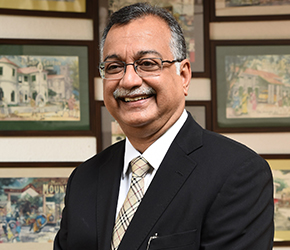 The COVID pandemic has undoubtedly highlighted the importance of a robust healthcare system in the country and has shown the world that you are only as strong as your healthcare systems. This has made healthcare a priority as was seen in last year’s budget, where a lot of emphasis and expenditure was devoted to healthcare. Our expectations for Budget 2022 are: * Increased allocation for healthcare since we still have a lot of ground to cover in our expenditure on healthcare * Spend on strengthening our primary healthcare system which is the backbone of healthcare in India, public healthcare, preventive healthcare in addition to nutrition in children, and aggressive vaccination campaigns to include Covid-19 vaccination for all. * We also need to strengthen the public healthcare system by upgrading the infrastructure and personnel at government hospitals. Specifically, strengthen pediatric care, and pediatric intensive care, along with setting up of training programs and teams of intensive care doctors in government hospitals including in adult intensive care * Invest in more diagnostic labs across the country which was a necessity during the current pandemic * Set up more medical colleges especially in underserved areas and upgrade district hospitals to be the teaching hospitals for these colleges * Invest in technology to bridge the rural-urban divide in healthcare and make healthcare available for all in the country by expanding our universal healthcare schemes.
The COVID pandemic has undoubtedly highlighted the importance of a robust healthcare system in the country and has shown the world that you are only as strong as your healthcare systems. This has made healthcare a priority as was seen in last year’s budget, where a lot of emphasis and expenditure was devoted to healthcare. Our expectations for Budget 2022 are: * Increased allocation for healthcare since we still have a lot of ground to cover in our expenditure on healthcare * Spend on strengthening our primary healthcare system which is the backbone of healthcare in India, public healthcare, preventive healthcare in addition to nutrition in children, and aggressive vaccination campaigns to include Covid-19 vaccination for all. * We also need to strengthen the public healthcare system by upgrading the infrastructure and personnel at government hospitals. Specifically, strengthen pediatric care, and pediatric intensive care, along with setting up of training programs and teams of intensive care doctors in government hospitals including in adult intensive care * Invest in more diagnostic labs across the country which was a necessity during the current pandemic * Set up more medical colleges especially in underserved areas and upgrade district hospitals to be the teaching hospitals for these colleges * Invest in technology to bridge the rural-urban divide in healthcare and make healthcare available for all in the country by expanding our universal healthcare schemes.
…………………………………………………………………………………………………………………………………………………………………………………………………………………………………………….
Sunil khurana
CEO & MD, BPL Medical Technologies
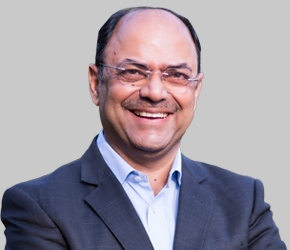
- PLI scheme, which is a big driver to produce products locally, revenue growth assumptions must be more realistic where MSME and Medium Industry can also qualify.
- A more participative approach by the GOI to incentivise R&D for the medical devices sector will promote more and quicker launches of own designed products locally.
- Similarly, GOI must consider the intangible expense of transfer buy out from overseas as the R&D category and a 50% subsidy on this will help speed quick localization of medical devices by reducing R&D time.
- Public Procurement Order (PPO) to go across as GOI drives to all the states and not just selectively in a few states. This will also help drive the “Make in India” initiative. Raising the bar of import by further increasing import cell (minimum raise by 10%) on medical devices already are being manufactured in India. Only products not currently getting manufactured in India could stay at the same rate. Entry barriers must be raised to push more to grow the pie of locally produced products.
- Government must increase the expenditure on healthcare as a percentage of GDP on a YOY basis with the aim to reach a 5% level in the next 5 years and stay at the same level.
- Reduction of GST level on medical devices to the lowest slab of 5% will help grow this segment. Accordingly, correction in inverted tax structure must be done on imported devices.
- When locally-made products are exported overseas, the GOI must launch a 10% direct incentive on export revenue. This will encourage Indian companies to be competitive to win more against low-cost country products and bring in precious foreign currency.
- Home care treatment must be included in insurance coverage, this will reduce the load on hospitals and release beds for more critical patients.
…………………………………………………………………………………………………………………………………………………………………………………………………………………………………………….
Dr. Gaurav Thukral
Executive Vice President and Chief Operating Officer HCAH India
 The current COVID-19 epidemic has highlighted the importance of the healthcare industry and its interconnections with other important economic sectors. The current epidemic has demonstrated how a healthcare crisis may quickly morph into an economic and social disaster. Despite the fact that home healthcare has been the fastest-growing section of Indian healthcare for more than a decade, it still needs standardisation and governance. I also hope to see the coverage of homecare in Ayushman Bharat Pradhan Mantri Jan Arogya Yojna. Through home healthcare collaborations, the load on hospital infrastructure will be reduced. I would want to see a government establish a regulatory framework for hospital-like care outside of hospitals in this year’s budget. With Omicron spreading now, healthcare has again become one of the biggest focus areas for governments as well as individuals. The government must invest enough through health budget into Covid Treatments and Vaccination at home. There is a dire need to bridge the urban-rural and big town-small town gap in terms of availability of Digital management of NCDs, health infrastructure, equipment and personnel. PHCs through telemedicine needs to be strengthened tremendously through robust protocols. Other measures, such as an expanded health insurance coverage for home healthcare – which only a few players now provide – can assist move this sector forward. Insurance coverage will alleviate the strain and, as a result, insurer payouts will be reduced. Second, compared to hospitals, home care employs 6-7 times more medical personnel, necessitating the classification of home caregivers, nurses, and attendants as a distinct skill set. The category will help to establish this as a legitimate career path. I’d also like to see the cut-off points for reimbursement of diagnostic expenses and registration for preventative well-being. In addition, the government should raise the tax exemption ceilings for preventive checkups.
The current COVID-19 epidemic has highlighted the importance of the healthcare industry and its interconnections with other important economic sectors. The current epidemic has demonstrated how a healthcare crisis may quickly morph into an economic and social disaster. Despite the fact that home healthcare has been the fastest-growing section of Indian healthcare for more than a decade, it still needs standardisation and governance. I also hope to see the coverage of homecare in Ayushman Bharat Pradhan Mantri Jan Arogya Yojna. Through home healthcare collaborations, the load on hospital infrastructure will be reduced. I would want to see a government establish a regulatory framework for hospital-like care outside of hospitals in this year’s budget. With Omicron spreading now, healthcare has again become one of the biggest focus areas for governments as well as individuals. The government must invest enough through health budget into Covid Treatments and Vaccination at home. There is a dire need to bridge the urban-rural and big town-small town gap in terms of availability of Digital management of NCDs, health infrastructure, equipment and personnel. PHCs through telemedicine needs to be strengthened tremendously through robust protocols. Other measures, such as an expanded health insurance coverage for home healthcare – which only a few players now provide – can assist move this sector forward. Insurance coverage will alleviate the strain and, as a result, insurer payouts will be reduced. Second, compared to hospitals, home care employs 6-7 times more medical personnel, necessitating the classification of home caregivers, nurses, and attendants as a distinct skill set. The category will help to establish this as a legitimate career path. I’d also like to see the cut-off points for reimbursement of diagnostic expenses and registration for preventative well-being. In addition, the government should raise the tax exemption ceilings for preventive checkups.
…………………………………………………………………………………………………………………………………………………………………………………………………………………………………………….
Dr. Veeraal Gandhi
Chairman, Voxtur Bio Ltd
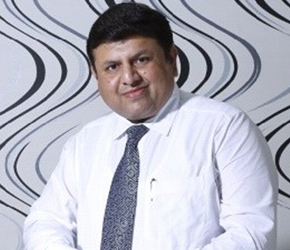 During pandemic or any other healthcare crisis, medical diagnostics plays a critical role in detecting infection and containing its spread. During previous pandemic waves, the diagnostics industry proved its effectiveness in early-stage healthcare interventions by ensuring disease identification and personalised care of patients. Going forward, developing robust testing capabilities and infrastructure should be the focus of the government to ensure effective containment of infections or diseases. Therefore, in the upcoming budget, the government needs to propose incentives and tax benefits on investments by IVD manufacturers. Moreover, to make the IVD industry self-sufficient, advanced and productive, the government should incentivize technology adoption. The budget can propose subsidies on technology imports from developed countries to facilitate fast-paced growth of the domestic IVD industry. It can also propose framework for an effective public-private partnership (PPP) model for cost-efficient technology transfer. In addition, the budget needs to relook into the tax liability on the IVD sector to ensure delivery of affordable healthcare.
During pandemic or any other healthcare crisis, medical diagnostics plays a critical role in detecting infection and containing its spread. During previous pandemic waves, the diagnostics industry proved its effectiveness in early-stage healthcare interventions by ensuring disease identification and personalised care of patients. Going forward, developing robust testing capabilities and infrastructure should be the focus of the government to ensure effective containment of infections or diseases. Therefore, in the upcoming budget, the government needs to propose incentives and tax benefits on investments by IVD manufacturers. Moreover, to make the IVD industry self-sufficient, advanced and productive, the government should incentivize technology adoption. The budget can propose subsidies on technology imports from developed countries to facilitate fast-paced growth of the domestic IVD industry. It can also propose framework for an effective public-private partnership (PPP) model for cost-efficient technology transfer. In addition, the budget needs to relook into the tax liability on the IVD sector to ensure delivery of affordable healthcare.
…………………………………………………………………………………………………………………………………………………………………………………………………………………………………………….
Saurabh Gupta
Vice President Operations
Medanta Lucknow

Healthcare cannot be treated as just another Industry within the ambit of an umbrella tax structure. It is imperative to have different tax slabs for hospitals.
…………………………………………………………………………………………………………………………………………………………………………………………………………………………………………….
Dr. Arbinder singal
Co Founder & CEO
Fitterfly

Covid has taught us that health is a priority and it has pushed people with chronic diseases like diabetes, obesity, hypertension towards higher risks of hospitalization as well as mortality putting enormous financial pressure on families and nations. Need of the hour is to strengthen traditional health infra with new technology driven ways to prevent, reverse and manage chronic illnesses. Such digital therapeutic programs can save billions of dollars in the long run. Western countries have made DTx programs reimbursable and the same should be offered and mandated by the Indian Government too.
………………………………………………………………………………………………………………………………………………………………………………………………………………………………………………
Sunil Thakur
Partener, Quadria Healthcare Pvt. Ltd.

The broad focus should be on capacity building, capability building, primary care, digitization and affordability. This should include incentivising, mandating and legislating to help
(1) create hospital beds in extra urban and rural sector
(2) clinical human resource building including upskilling for allied doctors / doctors, nurses and paramedics
(3) digitise and adopt technology across the value chain including for therapy augmentation and adherence, telemedicine and lifecycle management of care for patients and healthcare providers
(4) strengthen primary care and disease screening infrastructure
(5) include missing-middle as part of formal insurance coverage through employers or oneself and
(6) build capacity for localization of products and services through startups.
…………………………………………………………………………………………………………………………………………………………………………………………………………………………………………….
Runam Mehta,
CEO, HealthCube
 The Indian health-tech sector proved its potential to the fullest in 2021 and played a major role in containing the pandemic. India’s dependence on medical device import is one of the reasons behind the lack of adequate technology development and deployment across the country. We hope the government will make sufficient budgetary allocations towards development of new tools and technology and manufacturing of cutting-edge portable diagnostic, remote monitoring and telemedicine equipment. There is also a need for government-private collaboration in development and usage of advanced software-based solutions in rural healthcare delivery and preventive diagnostic services. Investments in the arena should be simplified, and there is an urgent need to incentivize and provide infrastructural support to companies developing the right solutions. Reduction of import duty on critical components required by the device manufacturers is another urgent area of attention. We hope the government takes care of these concerns and backs domestic medical device manufacturers.
The Indian health-tech sector proved its potential to the fullest in 2021 and played a major role in containing the pandemic. India’s dependence on medical device import is one of the reasons behind the lack of adequate technology development and deployment across the country. We hope the government will make sufficient budgetary allocations towards development of new tools and technology and manufacturing of cutting-edge portable diagnostic, remote monitoring and telemedicine equipment. There is also a need for government-private collaboration in development and usage of advanced software-based solutions in rural healthcare delivery and preventive diagnostic services. Investments in the arena should be simplified, and there is an urgent need to incentivize and provide infrastructural support to companies developing the right solutions. Reduction of import duty on critical components required by the device manufacturers is another urgent area of attention. We hope the government takes care of these concerns and backs domestic medical device manufacturers.
…………………………………………………………………………………………………………………………………………………………………………………………………………………………………………….
Sanjay Vinayak
Founder and CEO. Connect and Heal
 The Indian healthcare system has been dealing with its biggest challenge.As we move into a scenario where COVID-19 could become endemic with highs and lows from time to time, it is important to ready the ecosystem for the future. In this context, we hope the Government of India will take some key fiscal steps, beginning with simplification of GST conditions for all healthcare providers. Any organization delivering, facilitating, or coordinating healthcare services should be provided exemption from GST even if they are not clinical establishments themselves. Streamlining of these issues is critical for modern healthcare companies. Apart from this, the primary healthcare sector continues to suffer from financial challenges. There is a need to qualify primary healthcare credit as priority sector lending for Banks. This is essential as private sector needs to invest heavily into building a robust infrastructure. Another important area to focus is lower tax regime for healthcare sector to encourage capital inflow.
The Indian healthcare system has been dealing with its biggest challenge.As we move into a scenario where COVID-19 could become endemic with highs and lows from time to time, it is important to ready the ecosystem for the future. In this context, we hope the Government of India will take some key fiscal steps, beginning with simplification of GST conditions for all healthcare providers. Any organization delivering, facilitating, or coordinating healthcare services should be provided exemption from GST even if they are not clinical establishments themselves. Streamlining of these issues is critical for modern healthcare companies. Apart from this, the primary healthcare sector continues to suffer from financial challenges. There is a need to qualify primary healthcare credit as priority sector lending for Banks. This is essential as private sector needs to invest heavily into building a robust infrastructure. Another important area to focus is lower tax regime for healthcare sector to encourage capital inflow.
…………………………………………………………………………………………………………………………………………………………………………………………………………………………………………….
Saurabh Kochhar
Founder and CEO, Meddo Health

With new variants coming in, having an effective healthcare system in place is becoming more and more imperative for every nation, and there is no doubt that the way to do this would be to focus efforts towards digitization and outpatient care. We have impressive policies and government missions already in place like NDHM and Ayushmaan Bharat, and the only way that they can make a significant difference is with efficient implementation, catering to the environment and behaviors of stakeholders.
…………………………………………………………………………………………………………………………………………………………………………………………………………………………………………….
Dr. Ravi Gaur
Founder DRG Path Labs,
Principal Advisor Spice health CII co convener health
& wellness committee, Delhi chapter
 As world fights another covid wave and continued uncertainty ,the government must provide strong support to the healthcare industry.It is time to acknowledge and incentivise the vital role played by everyone involved in fighting this war. Care for caregivers and financial incentives ,will definitely help to reduce the fatigue setting in health care providers. The present pandemic has battered the healthcare infrastructure. It’s time to address health care at all fronts. There is need to increase allocation in healthcare, incentivise with tax exemptions and offer subsidies for capital investments for creating infrastructure. A separate fund should be created for healthcare service providers for developing innovative technologies of diagnosis and delivery. To generate more funds ,healthcare bonds should be launched with Income Tax exemptions. The tax exemptions for preventive health check up ,wellness spent and buying health insurance should be increased. The pandemic has hit the middle-class hardest. Their earnings have gone down substantially and most have spent their life savings on the medical treatment of their near and dear ones. In this challenging time, the government should understand the suffering of this class of tax payers and extend tax relief for out of pocket expenditure on covid medical treatment. Pandemic has exposed big gaps in health care, spl for skilled workers. It’s time to invest in creating health skill force ,which can be a national asset as we move forward. Long term ,low interest loans with subsidies and tax benefits should be offered to health education and research institutions to motivate more investments in this segment. It’s time to address long standing demand of healthcare service providers in in 0% GST category instead of exemption . This will help the industry to claim back the GSTs they pay to their vendors. This will help in keeping healthcare delivery cost low. A more focussed budget addressing both short term and long term gains in healthcare is the need of the hour. Needless to say, it’s time for the Government to open the pandora’s box and support healthcare industry with full aggression.
As world fights another covid wave and continued uncertainty ,the government must provide strong support to the healthcare industry.It is time to acknowledge and incentivise the vital role played by everyone involved in fighting this war. Care for caregivers and financial incentives ,will definitely help to reduce the fatigue setting in health care providers. The present pandemic has battered the healthcare infrastructure. It’s time to address health care at all fronts. There is need to increase allocation in healthcare, incentivise with tax exemptions and offer subsidies for capital investments for creating infrastructure. A separate fund should be created for healthcare service providers for developing innovative technologies of diagnosis and delivery. To generate more funds ,healthcare bonds should be launched with Income Tax exemptions. The tax exemptions for preventive health check up ,wellness spent and buying health insurance should be increased. The pandemic has hit the middle-class hardest. Their earnings have gone down substantially and most have spent their life savings on the medical treatment of their near and dear ones. In this challenging time, the government should understand the suffering of this class of tax payers and extend tax relief for out of pocket expenditure on covid medical treatment. Pandemic has exposed big gaps in health care, spl for skilled workers. It’s time to invest in creating health skill force ,which can be a national asset as we move forward. Long term ,low interest loans with subsidies and tax benefits should be offered to health education and research institutions to motivate more investments in this segment. It’s time to address long standing demand of healthcare service providers in in 0% GST category instead of exemption . This will help the industry to claim back the GSTs they pay to their vendors. This will help in keeping healthcare delivery cost low. A more focussed budget addressing both short term and long term gains in healthcare is the need of the hour. Needless to say, it’s time for the Government to open the pandora’s box and support healthcare industry with full aggression.
…………………………………………………………………………………………………………………………………………………………………………………………………………………………………………………………………………………………………………….
Ankit kedia
Founder & Lead investor Capital A
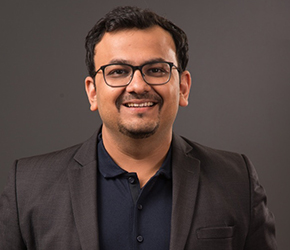
The last two years of pandemic has put a big spotlight on the healthcare infrastructure of our country and it needs a massive overhaul. There is a need to increase spends in both local government hospitals as well as adequately partnering with private hospitals to enable holistic care for the common man. We have seen a lot of encouraging steps like Ayushman Bharat, PMJAY in the past and will need to work on in-ground execution of these schemes. Similarly the healthcare startup ecosystem needs a lot of encouragement and funding support from the central government. By virtue healthcare startups take time to develop new age products and services, due to the complexities like clinical trials, interactions with doctors, research etc., founders drop out midway due to lack of funding or grants. A special push is required for homegrown startups to develop homegrown solutions for the upgrade of our healthcare infrastructure and thereby benefiting the population at large.
…………………………………………………………………………………………………………………………………………………………………………………………………………………………………………………………………………………………………………….
Shweta Agnihotri
COO, Cartula Health India

Cartula Health India is a telemedicine app that provides teleconsultation, health checkups, corporate wellness programs, video consultation etc services to the communities most in need. Cartula Health India incepted with an idea of eliminating the shortcomings in the Indian healthcare market and making healthcare easily accessible to every citizen, especially the rural population. After having a strong presence in Australia and Indonesia, Cartula Health India is on the mission to create an ecosystem where reliable diagnostic services and access to healthcare becomes easily available and remains highly affordable for rural as well as urban populations. Cartula Health India has empanelled 4500 diagnostic centers across 100 cities within 3 months in March’21. It was launched in India in January’21. It has tiedup with major pharmacy chains like PharmEasy, Apollo, 1mg and MEDLIFE to provide door-to-door services for drug and pharmacy requirements. Has gathered real time data by putting their ear on the ground by doing campaigns, banners etc in the rural market of Uttar Pradesh, Tamil Nadu and Karnataka.
Some of the key USPs of Cartula Health India includes-
• Cartula Health India offers the cheapest services in the Indian market (A teleconsultation service will cost as low as Rs.100) • The strong tech used to make the app extremely user friendly taking into account the target markets • Availability of international coaches for conducting webinars, knowledge sessions and live coaching for the Indian market • 7+ multi language support • 24*7 healthcare resource access to all non-emergency health services Cartula Health has also come up with Cartula Janani – to give information on pre and postnatal care as the researches suggest that India is one of the leading countries with a high mortality rate during childbirth.
…………………………………………………………………………………………………………………………………………………………………………………………………………………………………………….
Dr. Akshay Singhal
Founder, Log 9 materials

Working in Nanotechnology Domain and EV:
In the upcoming Union Budget, from the EV ecosystem perspective, we hope to see that the FAME Subsidy corpus should be extended to EV retro fitment kits. Additionally, more R&D incentives should be given for energy storage and EV technology-related developments in India, as well as R&D investments made into local technology developments, which should be made 100% adjustable against corporate taxes.
…………………………………………………………………………………………………………………………………………………………………………………………………………………………………………….
Deepak MV
CEO & Co-Founder, Etrio
 At a time when EV adoption is gaining unprecedented momentum despite many challenges, in the upcoming Union Budget 2022, we at Etrio would like to see the Finance Minister address the critically-important area of making wide and varied range of financing options available for EV commercial vehicles’ buyers – as this is extremely critical for further increased uptake of EVs in India, going forward. To this end, the Government should make the EV sector a priority lending sector for the financial institutions. Additionally, reducing the GST taxation on Lithium-ion batteries and EV spare parts and components can also be a great step forward from the EV manufacturing and OEM point of view. Given that increased adoption of EVs in the logistics and last-mile delivery segment is the need of the hour to reduce Carbon emissions, the Government must also come up with additional sops or incentives for the nation’s fleet aggregators to switch entirely from IC engines to EVs in order to pave a sustainable and zero-emissions future. Last but not the least, we also hope that this Budget answers the need for revitalizing the B2B retrofitment (ICE to EV conversion) space pan-India by bringing retrofitment under the ambit of FAME-II.
At a time when EV adoption is gaining unprecedented momentum despite many challenges, in the upcoming Union Budget 2022, we at Etrio would like to see the Finance Minister address the critically-important area of making wide and varied range of financing options available for EV commercial vehicles’ buyers – as this is extremely critical for further increased uptake of EVs in India, going forward. To this end, the Government should make the EV sector a priority lending sector for the financial institutions. Additionally, reducing the GST taxation on Lithium-ion batteries and EV spare parts and components can also be a great step forward from the EV manufacturing and OEM point of view. Given that increased adoption of EVs in the logistics and last-mile delivery segment is the need of the hour to reduce Carbon emissions, the Government must also come up with additional sops or incentives for the nation’s fleet aggregators to switch entirely from IC engines to EVs in order to pave a sustainable and zero-emissions future. Last but not the least, we also hope that this Budget answers the need for revitalizing the B2B retrofitment (ICE to EV conversion) space pan-India by bringing retrofitment under the ambit of FAME-II.
…………………………………………………………………………………………………………………………………………………………………………………………………………………………………………….
Abhishek Pathak
Founder & CEO, Greenwear
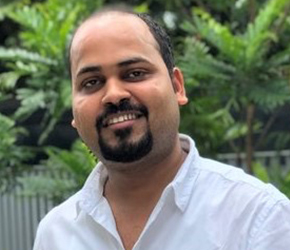 I expect the budget to lay down a 5-year plan to increase participation/usage of renewable energy resources by decentralized small industries and craft sector. The government should ensure growth in procurement from start-ups working with renewable energy resources. The textile industry alone has the potential to reduce carbon footprint by a huge margin along with creating jobs at the local level. The textile and Fashion industry needs urgent reforms in order to reduce polluting earth. We are taking one step at a time and currently are very small against the problem. However, we believe that the solar-vastra value chain if added with natural fibers and organic processes will create immense impact in reducing carbon footprint from the textile industry. If only 5% of Indian villages become solar charkha clusters (around 30,000), it can produce 180 Cr kgs cotton yarn which is almost 50% of India’s current cotton yarn capacity, and generate livelihood for 1.2 Cr people without migrating from their villages.
I expect the budget to lay down a 5-year plan to increase participation/usage of renewable energy resources by decentralized small industries and craft sector. The government should ensure growth in procurement from start-ups working with renewable energy resources. The textile industry alone has the potential to reduce carbon footprint by a huge margin along with creating jobs at the local level. The textile and Fashion industry needs urgent reforms in order to reduce polluting earth. We are taking one step at a time and currently are very small against the problem. However, we believe that the solar-vastra value chain if added with natural fibers and organic processes will create immense impact in reducing carbon footprint from the textile industry. If only 5% of Indian villages become solar charkha clusters (around 30,000), it can produce 180 Cr kgs cotton yarn which is almost 50% of India’s current cotton yarn capacity, and generate livelihood for 1.2 Cr people without migrating from their villages.
…………………………………………………………………………………………………………………………………………………………………………………………………………………………………………….
Shivam Singhee
CEO & Co-Founder, Awshad
 Working in Health and wellness,/Lifestyle/CBD/Cannabis.
Working in Health and wellness,/Lifestyle/CBD/Cannabis.
As a startup in the wellness and medical cannabis space, we have benefited from the earlier government initiatives like the startup initiative and the Make in India initiative that helped us create a space for ourselves. However, in 2022 we hope to see the Government will expand on these schemes and help home-grown brands grow and thrive in the Indian market. We also hope there will be incentives in place to help Indian brands expand their markets internationally and help bring FDI to the exponentially growing wellness sector. We also hope the government will offer more tax relaxation to startups in the wellness space to help them compete with giant multinationals eyeing to control this sector.
…………………………………………………………………………………………………………………………………………………………………………………………………………………………………………….
Shalu Jha
Co-founder & Director, PRandit Solution

At a time when the Covid-19 threat is still looming large on the Indian economy, the upcoming Union Budget should focus on enabling collective economic growth and supportive aid for various industry sectors, including the services sector and the media sector. At the same time, I would also like to see a focused push and incentivization for digital media platforms and startups in the media and communications industry in order to allow them to prosper. Especially given that the accelerated adoption of digital and social media networks has now given more power in the hands of the nation’s consumers, some stimulus packages and futuristic policy moves focusing on digital infrastructure building and media-tech will be furthermore welcome and encouraging.
…………………………………………………………………………………………………………………………………………………………………………………………………………………………………………….
Upendra Nath Sharma
Partner J Sagar Associates (JSA)

Healthcare Sector will continue to assume limelight in the Union Budget for FY 2022-23. Post the turmoil created by the second wave of the COVID-19 pandemic, while the nation was trying come to terms with the ‘new normal’, we have a new variant of the virus, in terms of Omicron, which is spreading like wildfire. While the consequences may not be as severe as the second wave, it continues to remain a cause of worry and there could be more such variants in future. Hence, it is but fair to expect the government to provide utmost priority to healthcare sector in the coming budget. Also, in view of the targets under the National Health Policy, 2017, aspects like digital integration of India’s healthcare records and further strengthening the healthcare infrastructure of the country, will continue to be in focus.
…………………………………………………………………………………………………………………………………………………………………………………………………………………………………………….
Nilesh Aggarwal
CEO, IJCP Group
Founder Medtalks and eMedinexus
 Digital healthcare services have clearly demonstrated their scope and potential during the recent times. Today, as India deals with the third wave of the pandemic, it is absolutely urgent to expand high-quality healthcare coverage to every nook and corner of the country. We hope the government will focus on digital infrastructure further as telemedicine and online doctor consultations are the fastest, most reliable, and accessible mode of primary healthcare today. By allocating adequate budget for building digital infrastructure in the existing primary healthcare facilities, we can ensure better connectivity and coverage. By integrating telemedicine and remote health monitoring services into the PHCs, it is possible to significantly reduce the demand-supply shortage in healthcare. There is also a need to encourage private sector platforms and service providers to operate in this vertical by offering financial support and conducive legal framework under National Digital Health Mission. There should also be a strong focus on skill development in the rural healthcare sector. The Budget is the ideal opportunity to start this healthcare transformation.
Digital healthcare services have clearly demonstrated their scope and potential during the recent times. Today, as India deals with the third wave of the pandemic, it is absolutely urgent to expand high-quality healthcare coverage to every nook and corner of the country. We hope the government will focus on digital infrastructure further as telemedicine and online doctor consultations are the fastest, most reliable, and accessible mode of primary healthcare today. By allocating adequate budget for building digital infrastructure in the existing primary healthcare facilities, we can ensure better connectivity and coverage. By integrating telemedicine and remote health monitoring services into the PHCs, it is possible to significantly reduce the demand-supply shortage in healthcare. There is also a need to encourage private sector platforms and service providers to operate in this vertical by offering financial support and conducive legal framework under National Digital Health Mission. There should also be a strong focus on skill development in the rural healthcare sector. The Budget is the ideal opportunity to start this healthcare transformation.
…………………………………………………………………………………………………………………………………………………………………………………………………………………………………………….
Chander Shekhar Sibal
Senior Vice President Medical Division
Fujifilm India
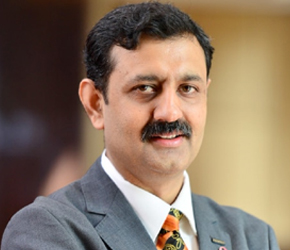 We’re looking forward to building and balancing the country’s healthcare infrastructure with government’s support as we enter the third year of the pandemic. We hope that the budget delivers a special focus on healthcare to mitigate the devastation from the coronavirus. For this, it will be pertinent to have concrete policies that ensure accessible and affordable healthcare. It would be great to see the allocation of funds within the states as per policy. The timeline of fund clearance should be reduced to clear roadblocks due to lack of funds. Once these are in place, we can expect better outcomes out of public-private partnerships in the space and make payment processing easier and quicker. Since healthcare has made significant advances in the light of COVID-19, this year, we would like to bring out a focus on preventive healthcare to fortify the health of the people. With a large population and a diverse requirement for healthcare across situations, we at Fujifilm are gearing up to support India’s healthcare/medical needs.
We’re looking forward to building and balancing the country’s healthcare infrastructure with government’s support as we enter the third year of the pandemic. We hope that the budget delivers a special focus on healthcare to mitigate the devastation from the coronavirus. For this, it will be pertinent to have concrete policies that ensure accessible and affordable healthcare. It would be great to see the allocation of funds within the states as per policy. The timeline of fund clearance should be reduced to clear roadblocks due to lack of funds. Once these are in place, we can expect better outcomes out of public-private partnerships in the space and make payment processing easier and quicker. Since healthcare has made significant advances in the light of COVID-19, this year, we would like to bring out a focus on preventive healthcare to fortify the health of the people. With a large population and a diverse requirement for healthcare across situations, we at Fujifilm are gearing up to support India’s healthcare/medical needs.
…………………………………………………………………………………………………………………………………………………………………………………………………………………………………………….
Dr. Wasim Ghori
Brand Ambassador DiaBeaters, India
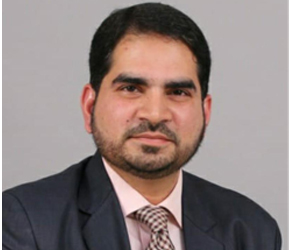 In the 2021 Budget, healthcare sector came up as a major winner.
In the 2021 Budget, healthcare sector came up as a major winner.
Giving top priority to health and well-being, the government increased the allocation to the sector by a whooping 137 percent to Rs 2.23 lakh crore. Currently, India has the youngest workforce but with dropping fertility rates and increasing lifespan, we are going to have a huge surge in health care expenses in the next 10 to 20 years. We are already witnessing a massive increase in lifestyle disorders. With the reduction in physical activity, there has been a steady increase in obesity, diabetes, cardiovascular diseases and cancer. As per one survey close to 5.8 Million Indians die from NCDs (heart and lung diseases, stroke, cancer and diabetes) every year. The rising NCDs is going to be a huge burden on Indian economy. The country needs a healthy and fit population to become a world giant. Genome Mapping is the need of the hour, it will lead to the reduction in lifestyle diseases. It will make Indians more aware about their physical make up. It will help in making informed lifestyle choices, which will result in the reduction of future medical bills and physical distress. It is imperative for the government to promote public-private partnerships for Genome Mapping projects. Currently due to less infrastructure and the presence of low number of labs, the cost of genome mapping is very high. Only few elite people can avail the facilities. Government of India, need to give subsidies so that the personalized genetic report is available to everyone. The financial budget 2022-23 should allocate funds for the development of resources that enable monitoring of the genomic – related health status of populations. This will provide the much-needed data to discover cures for complex health conditions.
…………………………………………………………………………………………………………………………………………………………………………………………………………………………………………….
M Suresh Babu
Director, PMLS & SU and Service
Mindray Medical India Pvt. Ltd
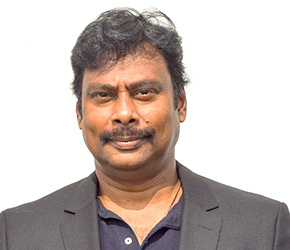
The second wave of the COVID-19 pandemic has posed many challenges for healthcare systems worldwide including India. We are on track to nurture R&D and technological innovations to address the same. With the Government looking at increasing the healthcare expenditure above 2.5 per cent of GDP by 2025, we may like to keep our focus on developing strong infrastructure and training programs. Special emphasis may be laid on the development of healthcare services in tier 2, tier 3, and rural areas. With medical devices playing a vital role today and in continuous mutating times to come, a balanced model of procuring medical devices – whereby Imports are not hurt, we are also able to constantly drive ‘Make in India’ – is the need of the hour! By ensuring this balance which I am sure the upcoming Budget is going to bring, we look forward to a stronger medical sector delivering healthcare solutions to the country and the world!






